
The Grounds
 |
|||||
The History of Dover Football Club
The Grounds |
|||||
|
DOVER CRICKET GROUND The first Dover Association Football Club played its home matches at the Cricket Ground, which was just
off Beaconsfield Road. This was in the 1888-89 season, and mention is made in the local paper of “playing towards the Beaconsfield Road end”. The Dover Cricket Club was ejected from the ground,
as it was needed for building purposes, and Millais Road and Leighton Road were built on the site soon afterwards.
THE DANES The second Dover
A.F.C. was formed in 1891, soon after The Danes was opened. The first matches on the ground were on Saturday, 3rd.October,
1891, and the Highland Light Infantry Reserves beat the Northumberland Fusiliers 3-2, and the Dover Football Club (which played
Rugby) lost to the Border Regiment by 2 tries to nil. By the end of December, however, the playing areas were in such a state,
that Dover A.F.C. moved to the new football ground at Crabble Meadows. A disagreement over rent led to The Danes being used
from 1894-97, and then after that the odd reserve match was played there if Crabble was unavailable. The Danes has probably
changed very little in over 100 years. The road up to the ground has improved somewhat since those early days, as apparently
some Margate supporters came over in cars and couldn’t get them up the muddy slope, having to park them in Barton Road.
|
||||
|
CRABBLE MEADOWS |
||||
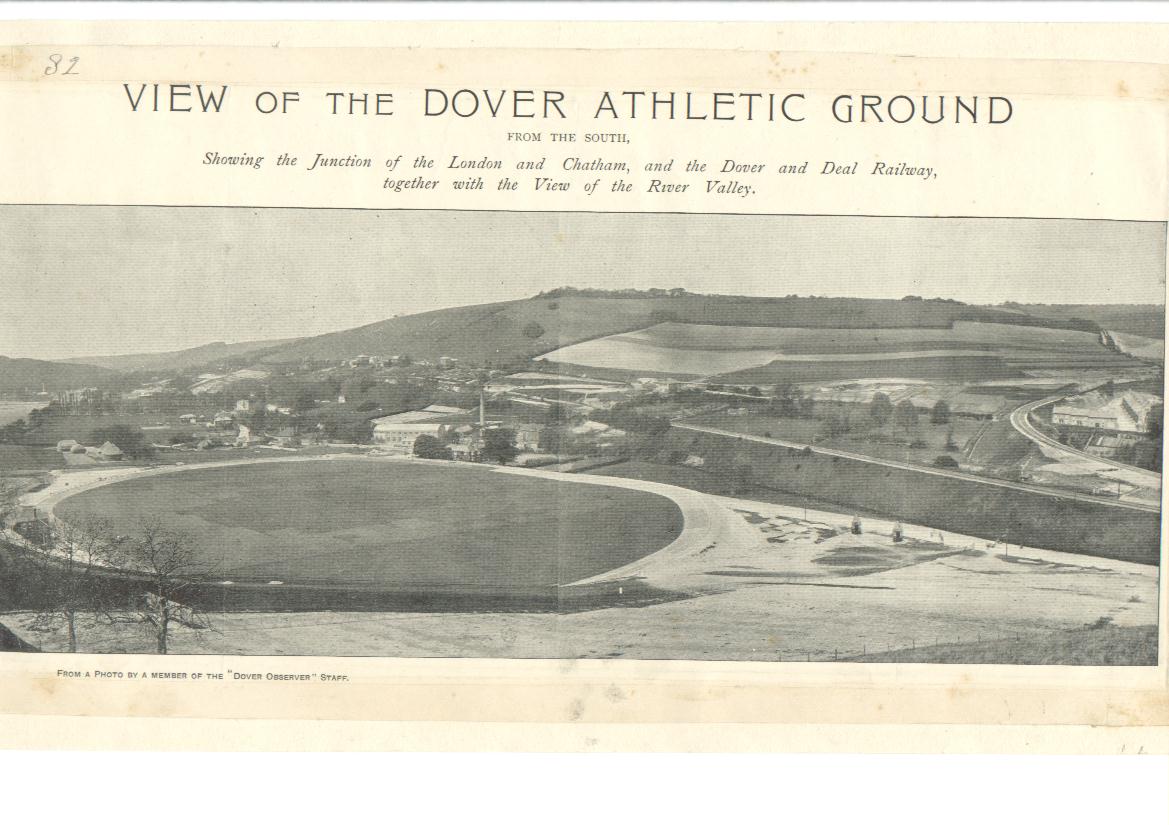
CRABBLE ATHLETIC
GROUND With the Cricket
Club being without a home after 1895, it was proposed to build a new sports ground at Crabble Meadows. It had long been considered
that this was needed, and this had been hastened by the closure of the Cricket Ground. In 1896 a syndicate was formed, consisting
of Messrs. Henry Hayward, Frederick Finnis, James Stilwell, and Alfred Leney, and these gentlemen succeeded in purchasing
14 acres of forest and grazing land in Crabble meadows extending from Bunkers Hill to Crabble Bridge near the junction of
the London Chatham and Dover, and Dover and Deal railway lines. The Dover Athletic Ground Ltd. was formed, with these four
gentlemen as directors, and the authorised capital available was £12,000. The levelling of the ground was a very costly project,
as 38,000 cubic yards of chalk had to be dug out of the hillside, and were thrown forward to provide a level ground. 
The pavilion was
set into the terraced hillside, and had changing rooms on the ground and top floors, and a dining room and bar on the middle
floor. It was redeveloped in 1984 to its present layout. The
company running the ground found that the venture was not as profitable as had been hoped, and in 1902, the Dover Corporation
bought the ground for £5,000, half the cost of its construction. There was a small
wooden grandstand beside the main pitch on the south side of the ground, but this did not survive the Second World War. There
was a rope around the pitch, and duckboards were provided to stand on. The terraces are still there, but the roof covering
them on the south side of the pavilion disappeared in the 1980s. Sometimes, the first
team and reserves played at home at the same time, and spectators drifted between the games, depending on how the games were
going. On the 6th.March, 1926, Folkestone played Dartford on no.1 pitch in the Kent Senior Cup semi-final, and Dover played
on no.2 pitch against the King’s Own Regiment in a Folkestone & District League match. The attendance for the semi-final
was almost 4,000, but how they separated the crowds I don’t know. In 1935, there was
a schoolboys international between England and Wales played at Crabble, and with Leslie Lines, a pupil at the Duke Of York’s
Royal Military School in the England team, there was considerable local interest. Nearly 10,000 fans turned up, and this is
the largest crowd to watch a football match here. The record crowd for a Dover match was the 7,261 that saw the F.A.Cup tie
against Snowdown C.W. on 1st.October, 1949. Dover Rugby Club started to play on the ground in 1952, a year after Dover F.C. moved permanently to
the present ground, and by 1976 the outfield was in such an indifferent state that the ground was declared unfit for first
class cricket.
“THE NEW FOOTBALL
GROUND” In the 1920s, the
relationship between Dover United and the Dover Corporation came under strain when concerns were raised about the state of
the playing surface. Dover cricket week was in August, and cricket took preference from the middle of April until at least
the middle of September. This meant Dover usually started and ended the season with a run of away matches, or games had to
be played at The Danes. The Dover Corporation announced plans to build a new football ground on the hillside behind the pavilion,
and with hundreds of local men out of work because of The Depression, the Corporation took advantage of a government scheme
to provide work for those made idle. The bill for digging out the new ground came to £11,000, £10,000 of which was provided
by the Unemployed Grants Committee. By 1931, the probably less-than-enthusiastic workforce had shovelled out and almost levelled
the new football pitch. There was a small stand erected in 1932 – the centre section of the stand which was redeveloped
in 1990 – and there were earth embankments behind each goal. The first match played at “Crabble Top” was
on 5th.September, 1931, and 1,000 fans saw Dover United lose a Kent League match 6-1 to Maidstone United. For the next twenty
years, the football club used the top ground at the beginnings and ends of seasons, and the bottom pitch outside the cricket
season. On a few occasions, the first team was at home on the bottom pitch, and the reserves played at the same time on the
top pitch. With large crowds flocking to watch football after the War, Dover came to an agreement to move to the
top pitch on a permanent basis. With building materials in limited supply, left-over Anderson shelters were used for the roof
of the extended main stand, which now had 1,000 seats. The banking behind the goals was concreted, and the Dover End was covered.
The River End was not covered until the early 1960s.
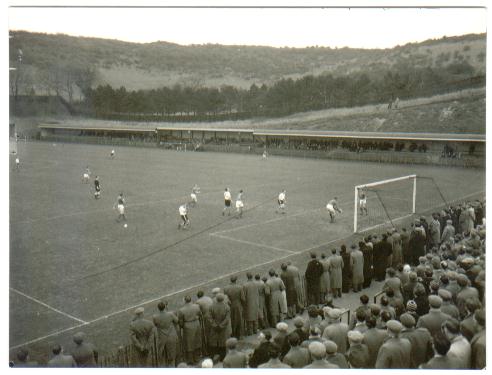
The last match played
by Dover on the lower pitch was against Sittingbourne on Monday, 26th.March, 1951, and the first on the now permanent
home on the upper ground was a friendly against a Fulham XI on Saturday, 7th.April, 1951. The stand was not actually
completed by then due a shortage of bolts. It was officially opened on Saturday, 25th.August that year, when we
played Folkestone. Just under 6,000 spectators saw that match. The ground record was established on 13th.October
that year, when just under 7,000 saw us lose to Folkestone in the F.A.Cup. By the early 1960s,
clubs such as Gravesend and Folkestone had installed floodlights, and Dover followed suit. The present four pylons were erected
with four lamps on each, and later in the 1960s, another four pylons – inside the fence around the pitch – were
added. The floodlight opening match took place on Monday, 2nd.October, 1961, and Chelsea’s first team beat
us 4-0 in front of a crowd of 4,312. Included in the Chelsea side was England under-23 international Mike Harrison, who played
for Dover in 1970-72. Various sets of lights have replaced the original ones, and the four central pylons were sold to the
Rugby Club for training lights, and they are still at the south end of the lower ground. One set of lights was bought by Deal
Town. The teams continued
to change in the dressing rooms on the top floor of the pavilion until the 1981-82 season, when the present changing/office
block was opened. Due to crowd problems after a defeat by Gravesend in the Kent Senior Cup in February 1953, the “Northrop Bridge” was installed so that the teams and match officials would
not have to walk through the crowd. In 1990, due to ground-grading problems with the Conference, the three covered sides of the ground were
completely redeveloped, and the ground was then up to Football League standard. The pitch was made more level in the summer
of 1994, and the Family Stand was built in the 1993-94 season. The Centre Spot was opened as a social club in about 1970;
there had been a supporters hut – about half the size of the present one – there for many years. There was a moveable
partition, with the Directors’ area separate from the main bar, until the Boardroom was first moved into the dressing
rooms building, and then on to the top of the stand.
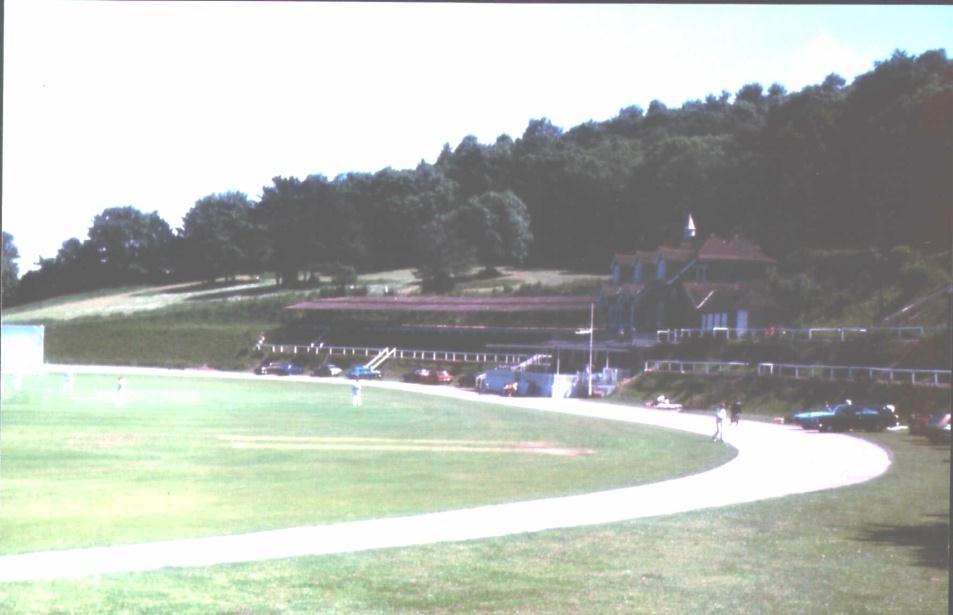
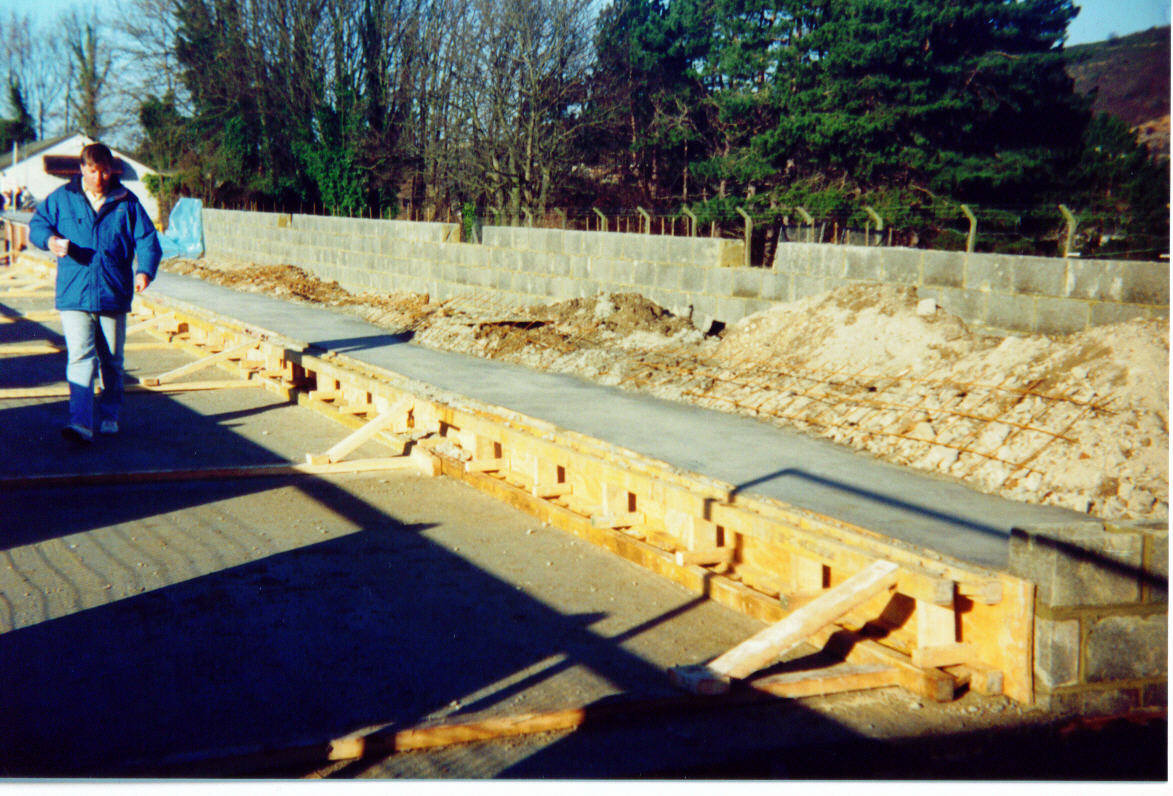
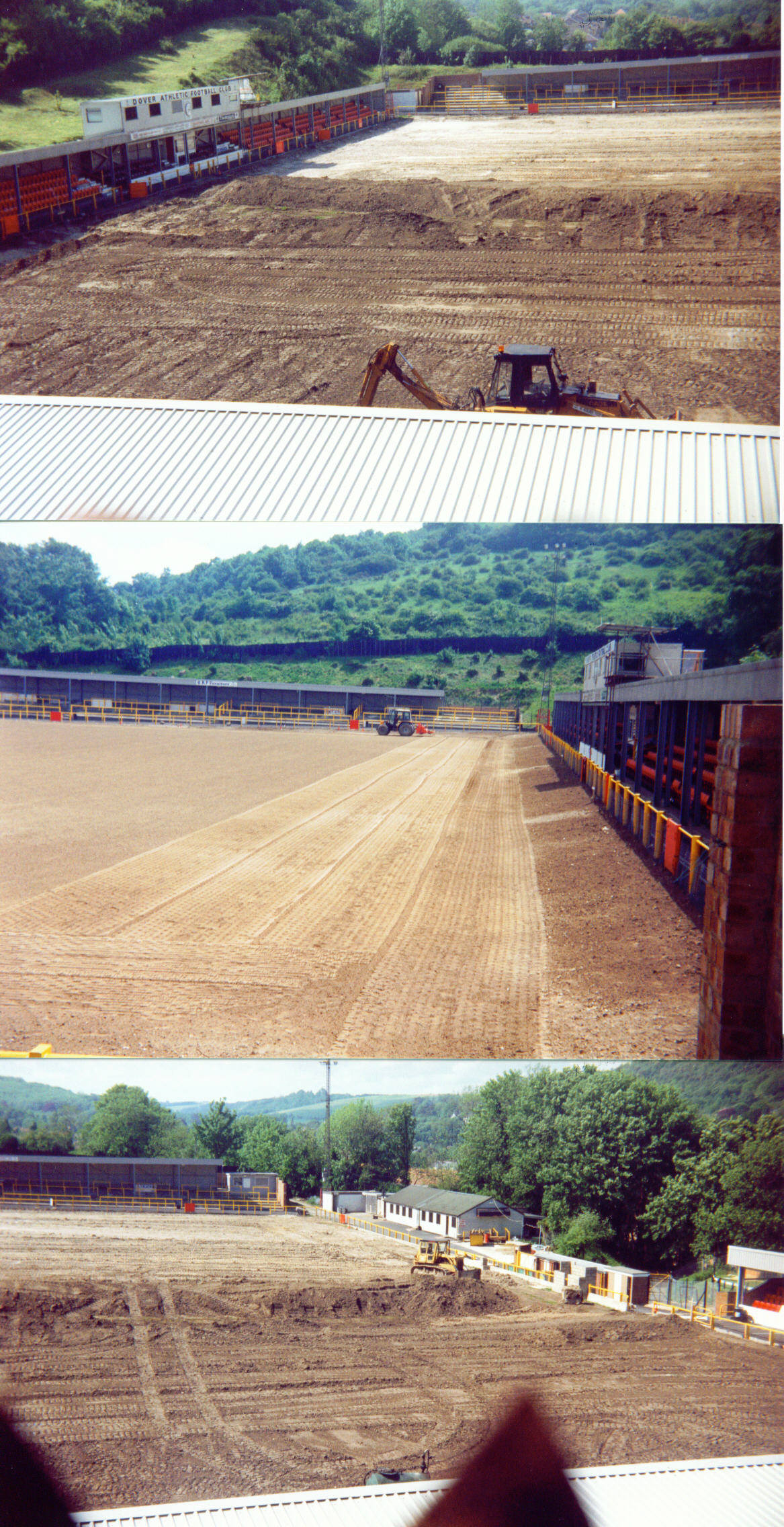
|
||||